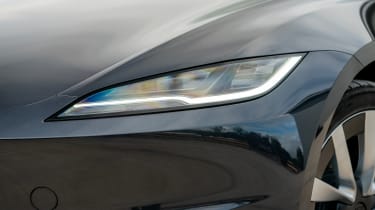Tesla Model 3 review – engine, transmission and technical details
Single and dual motor powertrains are available, with the latter offering a bigger battery for more range
Without a traditional engine the Model 3’s technical makeup is quite simple. The layout is of the same skateboard-style chassis that Tesla pioneered with the Model S, placing the batteries in a single, low-mounted sheet under the cabin. With the facelift, Tesla set about improving the Model 3's rolling refinement and comfort with retuned suspension, acoustic glass, extra sound insulation and tighter seals, but the core platform remains the same.
All models feature a powered rear axle, with the motor and transmission sat between the rear wheels. Dual-motor versions pick up a second motor on the front axle for improved acceleration and traction. Both suspension systems are classified as multi-link, but differ from the usual layouts thanks to the inherently different requirements of the electric powertrain’s technical packaging.
The entry-level rear-drive Model 3 generates a respectable 245bhp, with the Long Range adding a motor at the front axle for a 351bhp peak. Tesla has managed to keep the Model 3's kerb weight down to a respectable 1765kg (or 1828kg for the Long Range), undercutting the lightest BMW i4 by an enormous 300kg.
A flagship Model 3 Performance is expected to join the lineup later, and if the previous model is anything to go by, it should offer ballistic speed. A Track mode is expected to be included too, designed to unlock the maximum cooling and performance potential of the powertrain for consecutive laps.
The Model 3 wasn’t conceived to be a sporting machine, but late in its development Elon Musk decreed that it should be quicker around a track than a BMW M3. Tesla certainly achieved genuine sports saloon capability with the previous Performance model, even if it was missing the tactility and involvement of the best.




